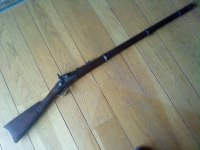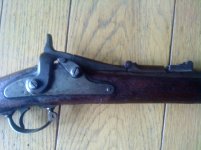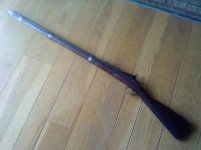I have this old Springfield Model 1865 sitting around for some time. My pop purchased it in the early 1960s at an Estate sale ( looking for furniture, but ended up with this, and newly-wedded mom was not very happy), near downtown Fredericksburg, VA.
I understand the family was the estate of a J.M Barton ( or Burton I am not sure), who's father had been a prisoner guard in the CSA somewhere in VA from was he was told. Kind of interesting I thought.
I like it a lot, but my personal interest is WW1.
I have read and heard all the virtual bodyslams when somebody tries to sell an item as "Civil War". What exactly would "qualify it?..?
From what I have been told, this would be a Federal US Springfield Model 1865, reconfigured after the war for militia use, and changed to "1st ( or 2nd i forgot) Allin / Allen (?) conversion. Does that sound right?
I understand the family was the estate of a J.M Barton ( or Burton I am not sure), who's father had been a prisoner guard in the CSA somewhere in VA from was he was told. Kind of interesting I thought.
I like it a lot, but my personal interest is WW1.
I have read and heard all the virtual bodyslams when somebody tries to sell an item as "Civil War". What exactly would "qualify it?..?
From what I have been told, this would be a Federal US Springfield Model 1865, reconfigured after the war for militia use, and changed to "1st ( or 2nd i forgot) Allin / Allen (?) conversion. Does that sound right?




